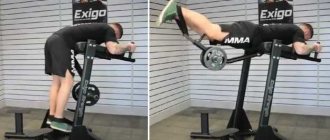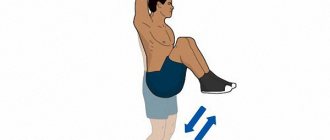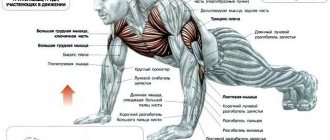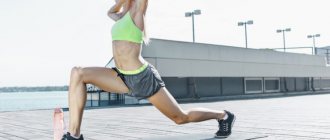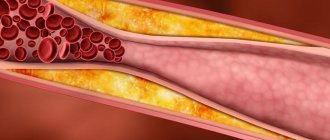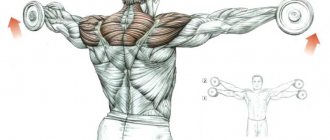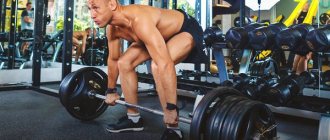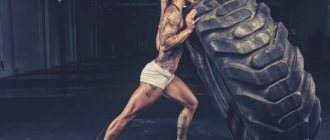Does jumping seem childish to you? But it’s in vain: simple jumping exercises have amazing benefits for the whole body and your endurance. Faster and higher is the goal of this workout!
If you think that jumping is a challenge for beginners, you will be sorely disappointed during your first training session. We all know how to jump since childhood - up ladders, over a skipping rope, but only trained guys can jump onto high objects. By the way, such jumping exercises are included in the training program for athletes, wrestlers and ardent CrossFit fans. Remember: training your high jump is the first step to burning unnecessary calories and increasing your endurance.
Jumping develops almost all muscle groups - the back, legs (hips and legs) and even the abs. Therefore, high jump training begins with the gradual development of each muscle. You can warm up your back by doing pull-ups, your hips and buttocks by doing squats, and your legs by doing calf raises with weights. So, let's start training the high jump.
Process Features
Of course, learning to jump 2 meters in just 1 day is an absolutely unrealistic task, but you need to work hard to achieve it.
The best solution to this issue would be to conduct training sessions in a specially equipped jumping sector.
The main task for the athlete here will be to achieve the greatest horizontal length after a standing jump.
The technology for performing the jump begins with a set starting position, then pushing off from a special board at the edge of the pit with two feet and then jumping into a pit filled with sand.
In this case, the distance result will be considered the distance from the mark on the board to the beginning of the hole left by the athlete’s foot from the landing on the sand.
During the flight phase, the athlete can use techniques of varying complexity, such as:
- In step;
- Bend over;
- Scissors.
GTO standards by age
To make it possible to objectively assess the physical fitness of an athlete, special standards were developed. Their numbers differ for people of different ages, and the norms for boys differ from the norms for girls.
Standing long jump. Standards for 7th grade.
Standing long jumps, the standards of which are passed by the male half, have the following categories of steps:
| stage | Age | Index | ||
| Satisfactory | Average | Best | ||
| 1st | Preschoolers and first graders aged 6-8 years | 110 cm | 120 cm | 140 cm |
| 2nd | Junior schoolchildren up to 10 years old | 130 cm | 140 cm | 160 cm |
| 3rd | Schoolchildren up to 12 years old | 150 cm | 160 cm | 180 cm |
| 4th | Teenagers 13-15 years old | 170 cm | 190 cm | 215 cm |
| 5th | High school students aged 16-17 years | 195 cm | 210 cm | 230 cm |
| 6th | Boys 18-24 years old | 210 cm | 225 cm | 240 cm |
| Men 25-30 years old | 205 cm | 220 cm | 235 cm | |
| 7th | Men 30-35 years old | 200 cm | 210 cm | 230 cm |
| Men 35-40 years old | 195 cm | 205 cm | 225 cm | |
Standing long jumps, the standards of which are passed by women, half have the following categories of steps:
| stage | Age | Index | ||
| Satisfactory | Average | Best | ||
| 1st | Preschoolers and first-graders up to 6-8 years old | 105 cm | 115 cm | 135 cm |
| 2nd | Junior schoolgirls 9-10 years old | 120 cm | 130 cm | 150 cm |
| 3rd | Girls 11-12 | 135 cm | 145 cm | 165 cm |
| 4th | Girls 13-15 years old | 150 cm | 160 cm | 180 cm |
| 5th | High school girls 16-17 years old | 160 cm | 170 cm | 185 cm |
| 6th | Girls 18-24 years old | 170 cm | 180 cm | 195 cm |
| Women 25-30 years old | 165 cm | 175 cm | 190 cm | |
| 7th | Women 30-35 years old | 140 cm | 150 cm | 170 cm |
| Women 35-40 years old | 130 cm | 140 cm | 165 cm | |
Preparatory training
In order to learn how to jump far, it is necessary to first prepare and strengthen the leg muscles, and immediately before jumping, be sure to warm up.
Training and doing exercises such as:
- Barbell squats using medium weight.
- Barbell or dumbbell calf raises.
- Lunges with weights.
- Jumping on a bench or pommel horse.
- Jumping up from a full squat.
- Running with jumping.
- Triple long jump.
During the warm-up, before jumping far from a place, you need to use general strengthening exercises in the form of:
- Deep squats;
- Rotation of the feet;
- Walking in single file;
- Calf raises.
This preparation will allow you to stretch your leg muscles so that during the jump you do not damage your joints or ligaments.
Air Alert Exercise Program at Home to Increase Jump Height
The Air Alert program is designed to improve jumping ability. It was developed by TMT Sports.
The course lasts 15 weeks , during which the creators promise amazing results - an increase in jump height by 20-35 centimeters (depending on the characteristics of the body).
Mandatory conditions while working on the program are good and sound sleep , as well as proper nutrition.
Schedule
The program requires a serious approach and attitude to performing the exercises. To achieve positive results, you need to stick to your training plan and schedule. Air Alert is designed for almost 4 months (15 weeks), the regularity of exercises is 3 times a week.
Warming up before training
warm-up exercises for himself. The main goal is to warm up all muscle groups and prepare them for stress. Jumping rope and running in place are recommended. Approximate heating time is 3-5 minutes.
How to improve your stretching
Warming up your muscles is half the battle. It is even more important to stretch all the muscles involved in the exercise.
So, the calf muscles are stretched with exercises similar to step-ups (we put our foot on the stairs and try to reach the floor with our hand).
Photo 1. This is how an exercise to stretch the calf muscle is performed: the foot is placed on the platform, with your hand you need to reach the toe.
The anterior thigh muscle also needs stretching, for which we place our leg on a chair and stretch our body towards this limb.
The muscles under the knee can be stretched using the most common bends - simple and effective!
High jump:
- Place your feet shoulder-width apart.
- Jump up as far as you can.
- When landing, squat down to about a quarter.
The main thing with this exercise is the speed of the jump. The point is to jump out as quickly and often as possible. Spending a split second will make sense. The person should feel the anterior thigh muscle tightening more than the calves.
Important! When jumping and landing, your knees should not bend.
Calf raises:
- Stand on some kind of elevation (like a thick book), your heels should not touch the ground.
- First, “reach for the stars” on the toe of one foot , then use the other limb.
- Between approaches, rest no more than 25-30 seconds.
Step-ups:
- with one foot on a certain platform, the height of which is at knee level (chair or bench).
- Push up with your supporting leg while changing legs in the air.
- Repeat the algorithm of action, but starting from the other foot.
Jumping on toes:
- Place your feet shoulder-width apart.
- Push off the floor as hard as possible using only your calves .
- Rest between sets: 1 minute.
The main point of the exercise: jump as high as possible, and be less on the ground. The faster a person jumps up after the next landing, the better (a greater effect is achieved).
Burnout
The exercise got its name “in honor” of the sensations that you will experience when performing it. A burning sensation should be felt in the leg muscles (if performed correctly).
- Stand in a half squat , rise on your toes.
- Make jumps strictly in this position, without lowering your heels to the floor (you need to carefully monitor this).
- Speed is the main thing when performing an exercise.
Relaxation
The program ends with relaxation of all muscles. stretching exercises again
What you need to know about the technique and the jump itself
In this chapter we will look a little at the technique and anatomy of this action.
To perform a jump, you need to apply both internal and external forces.
If we talk about external force, then gravity and also ground reactions have a strong influence. The first is valid in all phases, and the second only in the first, second and fourth.
Look at the picture, which shows each phase of the jump in detail and interestingly.
If this action is considered from the point of view of mechanics, theoretically of course, then the force of the push should be performed at an angle of 45 degrees to the horizon, since this is how the body moves in the free flight phase.
The support area changes in different phases. In the preparatory stage it is greatest; during the push it decreases, but by the end, that is, to the full landing, the area of support again becomes the same as at the beginning of the jump, since the jumper stands on both feet.
Thus, the stability of the body still depends on the support.
Next, we will consider the theoretical basis of the jumping technique.
Let's look at everything in more detail, that is, which muscles and joints help us with this.
In the first stage, it is necessary to prepare the motor system for an advantageous position.
For a stronger repulsion, the body should occupy a lower position at the beginning, and a higher one at the end. To do this, you need to stretch the muscles that carry it out.
In the first stage, the jumper is positioned in a squat position. The jump begins at the hip and knee joints. The torso is slightly tilted forward, the arms are slightly extended and laid back
The torso and head are held by the extensor muscles of the spinal column.
The squat position ensures subsequent push-off.
And so, let's move on to the second stage. This is where the push with both legs occurs. For a more even push-off, the feet should be parallel
When you push off, the ankle joint flexes, and the knee and hip joint also extend. Next, the jumper’s torso straightens, and a sharp swing of straight arms up increases repulsion.
We have looked at the second step; if you delve into it a little, it becomes clear that it helps us to jump far.
During the flight phase, you need to adopt a body position that promotes movement and proper landing.
That is, you need to bring your lower limbs forward. This is possible by tightening the hip flexor muscles.
When landing, the same muscles work as in the preparatory stage.
The third step is simpler, it is similar to the first, of course with its own nuances, but still not a big difference.
Don't forget about your breathing. It may not greatly affect the technique, but it is necessary to know how to breathe correctly.
This means that in the first phase you exhale, and when you land, you inhale.
Of course, what is written here may seem complicated, but this is a basic understanding of the performance, since knowing which muscles and joints are used in a given action, you can improve both the technique and the action itself.
Stop writing theory, which only confuses, let’s get down to practice, otherwise we’re probably already tired.
Read on for a more detailed description of each stage.
How to do standing jumps
To jump far, everyone needs to master the theoretical foundations of the technique of performing this exercise, consisting of main phases, which we will consider in more detail.
Preparation
Preparing to perform jumps begins with getting into the right position to push as hard as possible and jump far.
To do this, the athlete needs:
- Stand at the line;
- Place your feet shoulder-width apart;
- Raise your arms up while simultaneously lifting your body onto your toes and bending your lower back;
- Then make reverse movements by lowering your arms down and moving them back;
- The position of the legs should be taken on the entire foot;
- The knee and pelvic joints bend, and the body moves slightly forward.
Repulsion
This jumping phase is performed with both legs.
It begins while straightening the hip joints while simultaneously throwing the arms forward sharply.
The push-off phase is completed by extension of the knee joints with a sharp lift of the feet from the surface. In order to jump far, you need to push off sharply.
